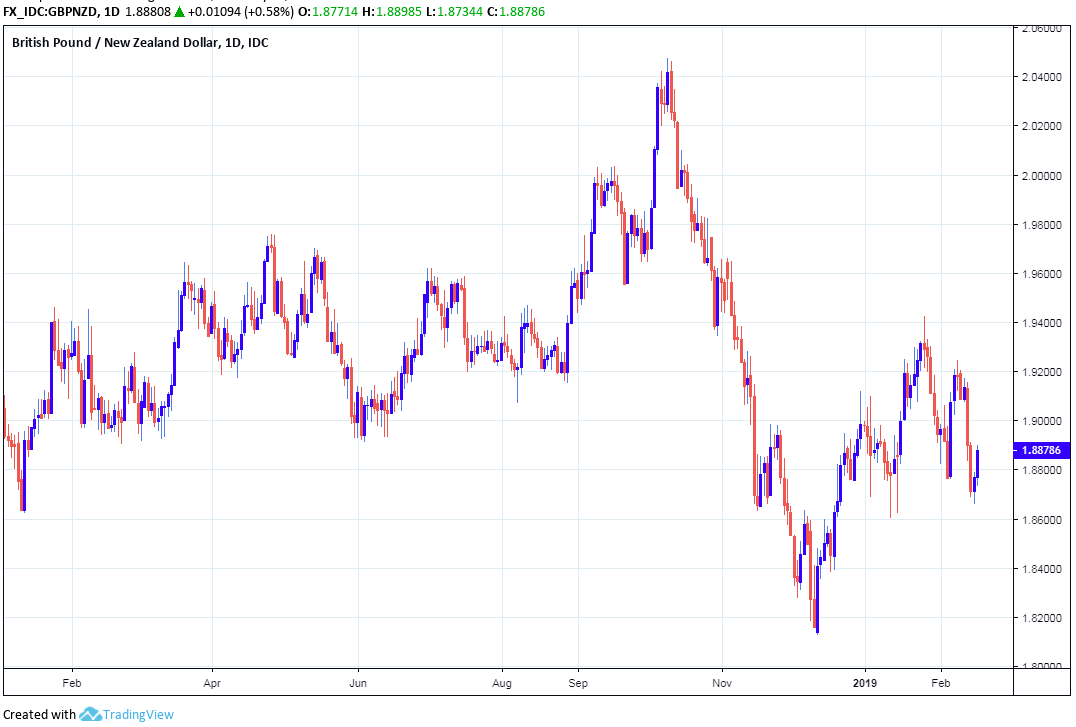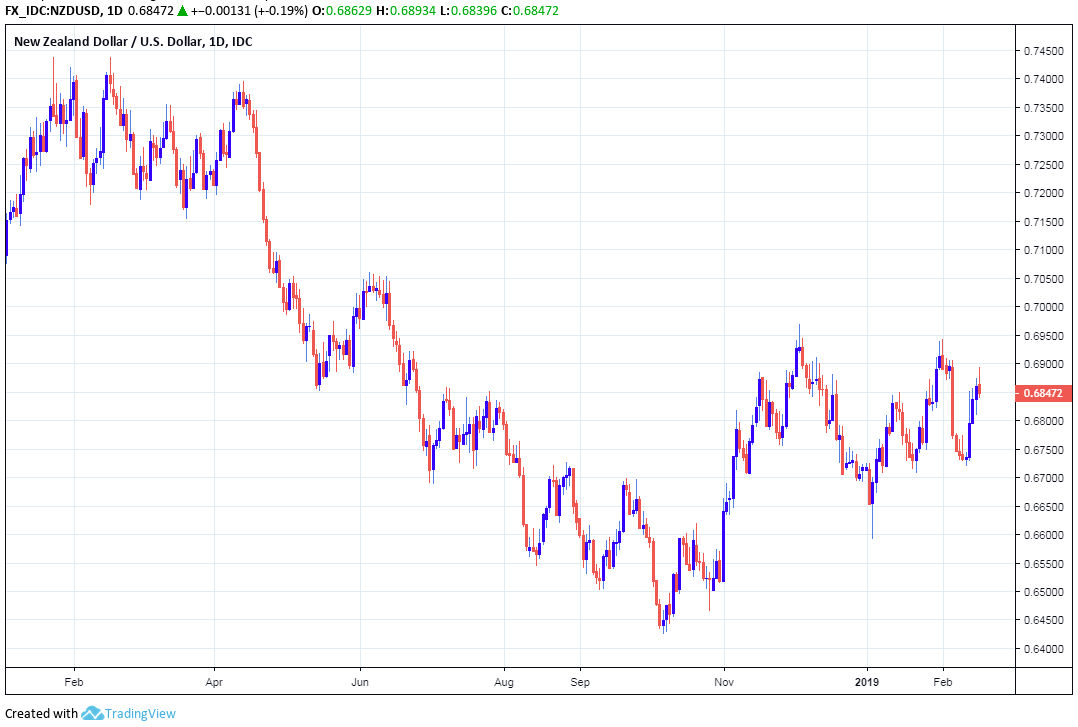New Zealand Dollar's Strength Won't Last as We've Seen this Before with the RBNZ says RBC
- Written by: James Skinner

© Pavel Ignatov, Adobe Stock
- NZD is G10's best performer this month but it won't last says RBC.
- As RBNZ has bluffed and about-turned on its rate guidance before.
- Bank could still cut rates so current NZD rally is likely built on sand.
The New Zealand Dollar is the G10 universe's best performing currency for the month of February but the Antipodean unit's strength won't last, according to analysts at RBC Capital Markets, who have told their clients they should prepare for a sudden reversal over the coming months.
New Zealand's currency shot to the top of the G10 league table this month after the Reserve Bank of New Zealand (RBNZ) took the market by surprise in retierating its neutral interest rate stance, when consensus had been for it to warn that a rate cut could be in the pipeline.
Just days before the February 11 statement, the Reserve Bank of Australia (RBA) told markets the next move in its rate could be either up or down, when previously it guided observers to anticipate the next move would be a hike.
The RBA's guidance had encouraged markets to anticipate an equally bearish tilt from the RBNZ, although one that was ultimately not forthcoming.
Such was the surprise in the market that the RBNZ did not follow suit with its own downgrade to an even more pessimistic position, the Kiwi bank's new GDP growth forecasts got very little attention on the day. Although they didn't escape RBC's watchful eye.
"In March 2015, the Bank maintained, “Our central projection is consistent with a period of stability in the OCR. However, future interest rate adjustments, either up or down, will depend on the emerging flow of economic data”," says Sue Trinh, head of Asia FX strategy at RBC Capital Markets. "By June 2015, the Bank cut the OCR for the first time in 4 years by 25bps."

Above: Pound-to-New-Zealand-Dollar rate shown at daily intervals.
The Kiwi has risen by more than 1% against the Pound, U.S. Dollar and Canadian Dollar this month, with most of the gains coming since last week's announcement. And the currency has risen more than 2% against the Aussie, Euro and other European units.
Markets have clearly taken the RBNZ's statement as a sign the bank does not plan on cutting its cash rate any time soon, but RBC's Trinh says this is the wrong interpretation to take because the bank has form for about-turning on policy guidance it had issued only months before.
The RBNZ has been battling below-target inflation for a number of years, which has led the bank to hold its interest rate at a record low of 1.75% since late 2016, but a slowing economy is now making its job of returning the consumer price index to the upper band of the 1%-to-3% target all the more difficult.
"The cut (and start of a new easing cycle) was prompted by a significant downgrade to its GDP growth forecasts – the 18m forward cumulative downgrade in its GDP forecast between its March 2015 MPS and its June 2015 MPS was 1.9%pts," Trinh recalls. "The cumulative downgrade in the central GDP projection from August 2018 to February 2019 was 2.3%pts."
RBNZ officials warned in July and August of 2018 they could cut the cash rate this year if momentum in the economy did not pick up before year-end, because increases in inflation normally require high and rising demand within an economy. Lower borrowing costs might encourage such a pick-up.
However, since the RBNZ last warned rate cuts are a possibility, Kiwi economic growth has fallen even further rather than gathering momentum. That's part of the reason last week's guidance came as such a surprise to the market.
New Zealand's GDP growth numbers for the final quarter of 2019 will not be released until early March but other data has already shown growth falling to its weakest level for three years during the third-quarter of last year. Most economies across the world appear to have slowed during the final quarter, including the UK and Eurozone.
The number of unemployed also rose a full 9% in the final quarter of 2018, pushing the unemployment rate up by 30 basis points to 4.3%, suggesting the final months of the year may have been ugly for the Kiwi economy too.

Above: NZD/USD rate shown at daily intervals.
"The new GDP forecast is 0.6%pts lower (18m cumulative forward basis) than even the downside scenario it outlined in August 2018– at the time, the RBNZ said the downside scenario could see the cash rate cut by 100bps," Trinh warns. "The market is pricing is pricing ~10bps of cuts this year (down from ~20bps pre MPS) which looks too low and the outsized NZD rally in the past 24 hours presents a good opportunity to position for a reversal."
Markets had before last week's statement been betting heavily in the overnight index swap market that the RBNZ would its interest rate before February 2020, with the implied cash rate for that month having fallen to 1.54% by the morning of February 11, only by Monday the implied rate had risen to 1.64%.
This means the financial market is only pricing in around 11 basis poinst worth of interest rate cuts for the next 12 months when in reality, if Trinh is right, the bank could actually be preparing to cut its cash rate by as much as 100 basis points.
That would deal a severe blow to the New Zealand Dollar and Kiwi exchange rates. And Trinh has suggested to clients that this is exactly what she thinks will happen over the coming months.
The NZD/USD rate was quoted -0.17% lower at 0.6845 Monday but is now up 2% for the 2019 year. That puts it in second place within the G10 league table for 2019.
The Pound-to-New-Zealand-Dollar rate was 0.71% higher at 1.8876 but is down -0.36% for the year-to-date. Sterling is in third against the greenback for 2019, with the Canadian Dollar in first place.
Time to move your money? Get 3-5% more currency than your bank would offer by using the services of foreign exchange specialists at RationalFX. A specialist broker can deliver you an exchange rate closer to the real market rate, thereby saving you substantial quantities of currency. Find out more here.
* Advertisement




